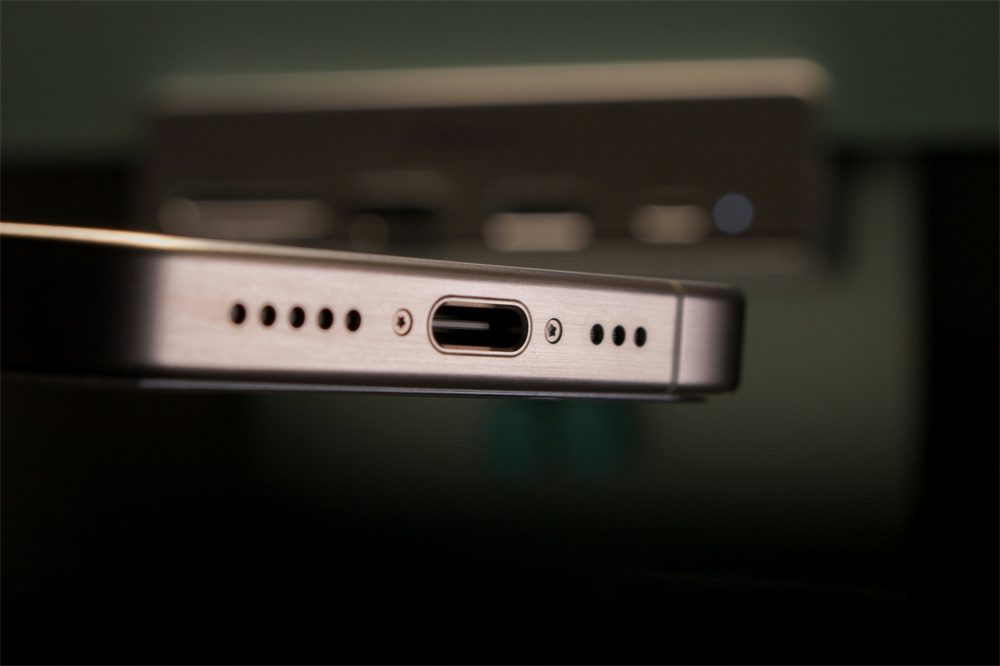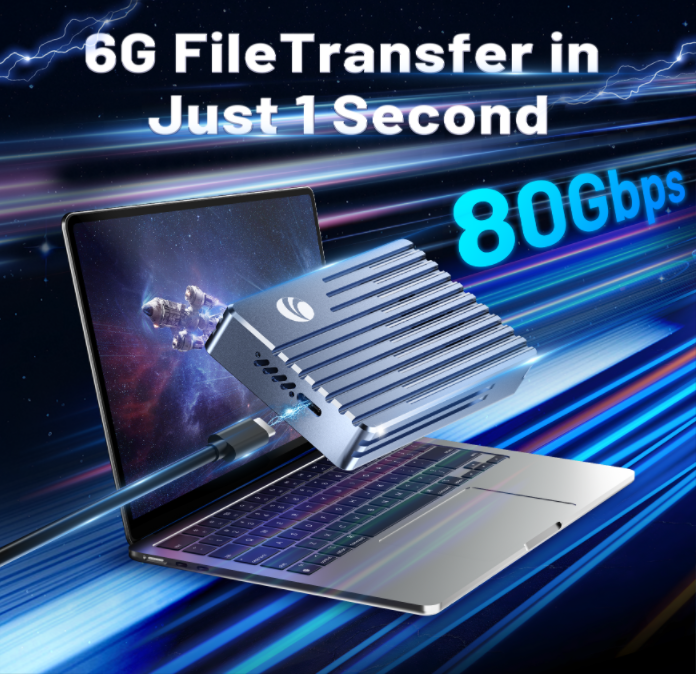What is Thunderbolt?
Thunderbolt is a high-speed data and video transfer technology co-developed by Intel and Apple. It integrates PCIe and DisplayPort protocols, supporting simultaneous data transfer, power delivery, and video output. Since Thunderbolt 3, it has adopted the Type-C connector for universal compatibility and expandability.

Thunderbolt Evolution Timeline
| Version | Year | Connector | Max Bandwidth | Key Features |
|---|---|---|---|---|
| Thunderbolt 1 | 2011 | Mini DisplayPort | 10Gbps | Data + video transmission |
| Thunderbolt 2 | 2013 | Mini DisplayPort | 20Gbps | Dual-channel aggregation |
| Thunderbolt 3 | 2015 | USB-C | 40Gbps | USB 3.1, DP 1.2, and 100W PD support |
| Thunderbolt 4 | 2020 | USB-C | 40Gbps | Enhanced compatibility, security, and certification |
| Thunderbolt 5 | 2023 | USB-C | 80Gbps (↑120Gbps) | DP 2.1, dual 4K@144Hz/single 8K, 24 |
Key Advancements in Thunderbolt 5
1. Blazing-Fast Data Transfer
80Gbps bidirectional bandwidth
Up to 120Gbps unidirectional with Bandwidth Boost
Critical for 8K video editing, multi-stream capture, and high-speed storage.
2. Display Performance Leap
Full DisplayPort 2.1 support enables:
Single 8K@60Hz
Dual 4K@144Hz
Triple 4K@60Hz
3. Enhanced Power Delivery
Supports up to 240W (USB PD 3.1)
Power high-performance workstations, laptops, and peripherals.
Real-World Application: Thunderbolt 5 SSD Enclosures
To harness Thunderbolt 5's potential, manufacturers like VCOM offer external SSD enclosures:
| Specification | Details |
|---|---|
| Interface | Thunderbolt 5 (Backward-compatible with TB 4/3 & USB4) |
| Speed | 80Gbps (bidirectional); Real-world R/W: 3,500–4,000+ MB/s (SSD-dependent) |
| Protocol | PCIe Gen4 x4, NVMe SSD support |
| Compatibility | M.2 2280 SSDs (up to 4TB) |
| Design | CNC-machined aluminum chassis with active cooling |
| OS Support | macOS/Windows/Linux (Plug-and-play) |
| Use Cases | 8K video storage, RAW photo backup, AI model loading, portable work drives |

Practical Examples:
Video editors: Store large projects externally for laptop-based 8K editing.
Photographers: Rapid RAW backup/transfer.
AI developers: Portable training datasets/models.
Professionals: Clone system disks for multi-device workflows.
Thunderbolt 5 vs. USB4: What’s the Difference?
While both offer high bandwidth, Thunderbolt 5 is the fully realized version of USB4. It extends USB4 with:
PCIe tunneling
DisplayPort 2.1
240W USB PD
Dynamic bandwidth allocation
Enhanced security certification
The Future: Thunderbolt 5 as the High-Performance Standard
Though still in early adoption, Thunderbolt 5 is rapidly expanding across laptops, workstations, docks, and storage. For professionals in creative fields, video production, AI, and AV, Thunderbolt 5 will be foundational to next-gen productivity.
Thunderbolt Technology FAQ
Q1: What makes Thunderbolt different from USB?
A: Thunderbolt integrates PCIe data + DisplayPort video + USB PD power in one cable. While USB4 shares the USB-C form factor, Thunderbolt (especially TB3/4/5) guarantees higher minimum performance, stricter certification, and advanced features like dynamic bandwidth allocation.
Q2: Is Thunderbolt 5 backward compatible?
A: Yes. Thunderbolt 5 devices work with Thunderbolt 3/4, USB4, and USB 3/2 ports via USB-C. However, speeds drop to the lowest supported standard in the chain (e.g., a TB5 SSD used with a TB3 laptop maxes at 40Gbps).
Q3: Why does Thunderbolt 5 claim "80Gbps" and "120Gbps"?
A:
80Gbps: Base bidirectional bandwidth (40Gbps each way).
120Gbps: Unidirectional speed using Bandwidth Boost (temporarily allocates unused lanes for tasks like 8K video export).
Q4: Can Thunderbolt 5 replace a GPU or display cable?
A: Absolutely. It supports DisplayPort 2.1, driving:
1x 8K@60Hz monitor
2x 4K@144Hz monitors
3x 4K@60Hz monitors
Note: For gaming/eGPUs, bandwidth is shared between data and video.
Q5: How much power can Thunderbolt 5 deliver?
A: Up to 240W (USB PD 3.1). This can charge high-end laptops or power bus-powered workstations, eliminating separate power bricks for many peripherals.
Q6: What real-world speed can I expect from a Thunderbolt 5 SSD?
A: While TB5 supports ~10,000 MB/s theoretically, current real-world SSDs max out near 4,000 MB/s due to NVMe SSD limitations. Future PCIe Gen5 SSDs will leverage more bandwidth.
Q7: Do I need special cables for Thunderbolt 5?
A: Yes. For full 80/120Gbps speeds, use certified Thunderbolt 5 cables (active cables under 1m). Longer/older cables throttle performance.
Q8: Is Thunderbolt only for Apple devices?
A: No. While co-developed by Intel/Apple, Thunderbolt 5 is widely adopted by Windows/Linux OEMs (Dell, Lenovo, ASUS, etc.). Apple’s latest Macs also support TB4/TB5.
Tag:Thunderbolt,SSD enclosure




